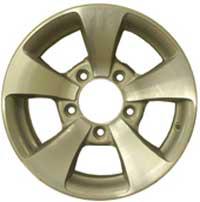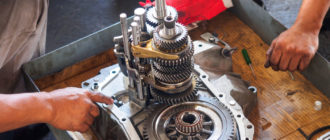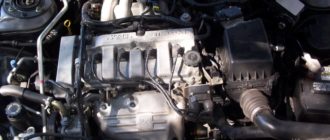As a vital part of a vehicle’s suspension system, ball joints help keep the wheels and tires in alignment while driving. These small components that connect the control arm to the steering knuckles are highly susceptible to wear and tear, which can lead to dangerous driving conditions if not addressed in a timely manner.
To avoid potential accidents and costly repairs, it’s crucial for drivers to be aware of the signs of worn ball joints. In this article, we’ll take a look at the top six indicators that your vehicle’s ball joints may need replacement.
From unusual noises to uneven tire wear, there are several telltale signs of worn ball joints that drivers should be aware of. By recognizing these symptoms early on, you can avoid further damage to your vehicle’s suspension system and ensure a safer driving experience.
Understanding Ball Joints: Identifying the Top Six Signs of Wear
Ball joints are an integral part of your vehicle’s suspension system. These small components connect the steering knuckles to the control arms, allowing for smooth movement and proper alignment of the wheels. However, like any other mechanical part, ball joints are susceptible to wear and tear over time. Understanding the signs of worn ball joints is crucial for maintaining optimal vehicle performance and promoting safety on the road.

source: https://blog.rainbowmuffler.net/blog/six-symptoms-of-bad-ball-joints
So, what are the top six signs of worn ball joints? Firstly, pay attention to any abnormal noises, such as squeaking, popping or groaning, when driving over bumps or making turns. This is often a tell-tale sign of worn ball joints. Secondly, check for uneven tire wear. Worn ball joints can cause the tires to wear unevenly, leading to premature wear and tear.
- Clunking noises: If you hear a clunking noise when you go over a bump, this is a clear indication that the ball joints are worn and need replacing.
- Vibration: If you experience excessive vibration in the steering wheel or through the floorboards, especially when driving at high speeds, this could be due to worn ball joints.
- Difficulty steering: Worn ball joints can also cause difficulty when steering, especially at lower speeds. You may notice that the steering feels stiff or the vehicle drifts to one side or the other.
- Loose steering: Conversely, worn ball joints can also cause loose steering. If you notice that the steering wheel feels loose or wobbly, this could be a sign that the ball joints are worn and need replacing.
- Visible damage: Lastly, inspect the ball joints for any visible signs of damage, such as cracks, dents or deformities. Any visible damage should be addressed immediately.
It’s important to have your ball joints inspected regularly and replaced as needed to ensure optimal vehicle performance, promote safety on the road, and avoid costly repairs down the line.

source: https://autoworksmn.com/2020/09/bad-ball-joints-and-your-safety/
Identifying the Top Six Signs of Worn Ball Joints
Ball joints are an essential component of a vehicle’s suspension system that enable the wheels to move up and down while steering. Over time, ball joints can become worn, leading to various problems that can affect the vehicle’s handling and safety. Here are the top six signs to look out for when identifying worn ball joints.
- Excessive vibration: One of the most common signs of worn ball joints is excessive vibration in the steering wheel, which can make it difficult to control the vehicle.
- Loose steering: Worn ball joints can also cause the vehicle’s steering to become loose, making it difficult to keep the vehicle on track.
- Uneven tire wear: When ball joints become worn, they can cause uneven tire wear, which can lead to costly repairs and a decrease in overall vehicle performance.
- Squeaking noises: If you hear squeaking noises when you turn the steering wheel, it could be a sign that your ball joints are worn and in need of inspection.
- Stiff steering: Stiff steering is another common sign of worn ball joints. This can make it difficult to turn the steering wheel, especially at low speeds.
- Poor alignment: Worn ball joints can also cause poor alignment, which can affect the handling and safety of the vehicle. It’s important to have your ball joints inspected regularly to ensure optimal performance.
Regular maintenance and inspections can help prevent problems with your ball joints and ensure your vehicle operates smoothly and safely.
Why It’s Vital to Replace Worn Ball Joints
Most vehicles have ball joints, which are crucial components of the suspension system. Ball joints are responsible for connecting the suspension control arms to the steering knuckles. They help maintain proper alignment and ensure smooth handling on the road. However, ball joints can wear out over time, leading to potential safety issues for drivers.
Here are the top six signs of worn ball joints:
- Uneven tire wear
- Noises from the front suspension
- Steering wheel vibration
- Pulling to one side while driving
- Excessive play in the steering wheel
- Visible damage to the ball joint housing
If you notice any of these warning signs, it’s vital to get your ball joints replaced as soon as possible. Delaying the repairs can cause further damage to other suspension components, leading to more expensive repairs down the line.
Replacing worn ball joints is a routine maintenance task that can help ensure your vehicle handles safely and smoothly on the road. A professional mechanic can inspect your ball joints and replace them before they cause any serious issues.






